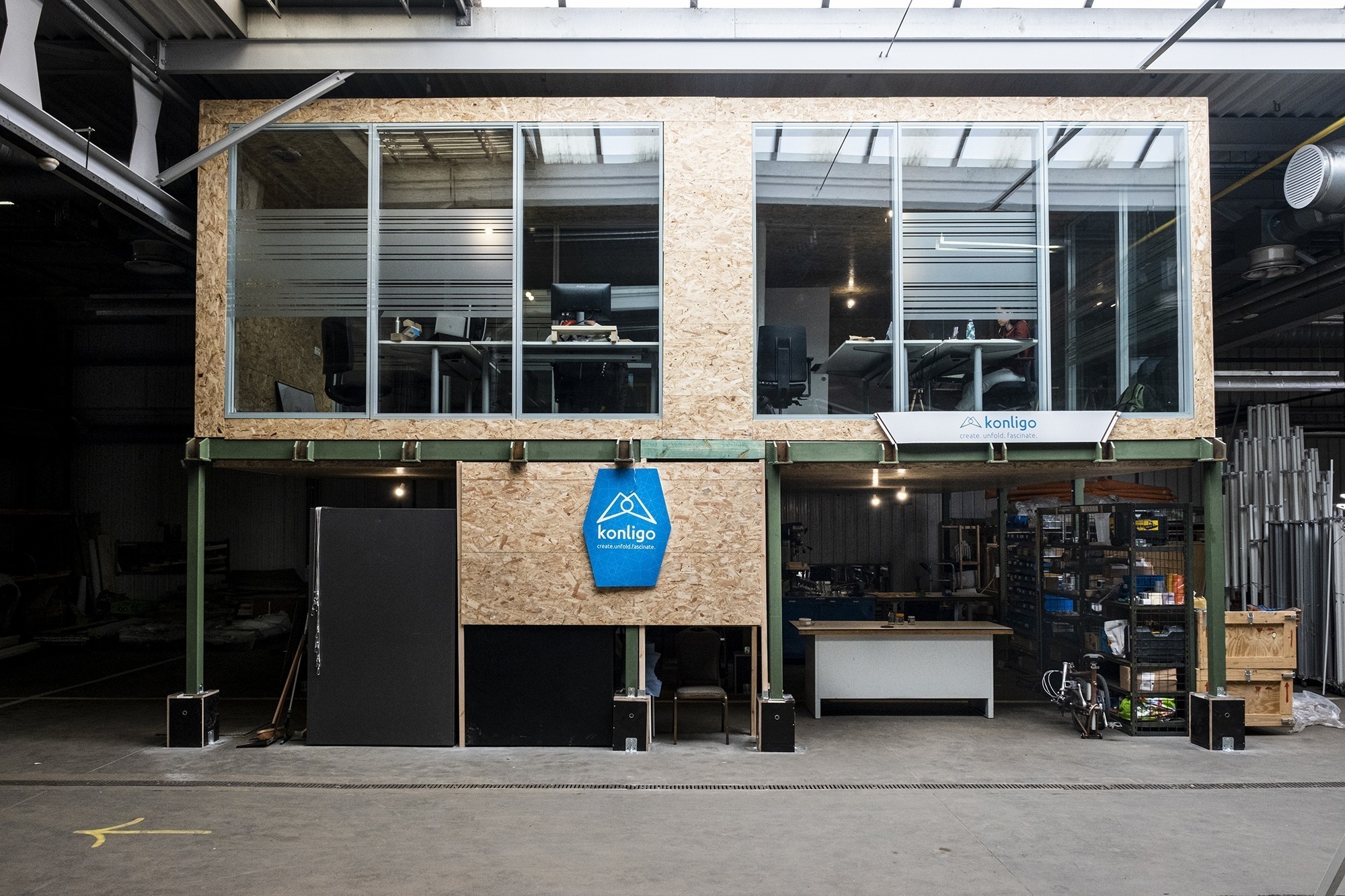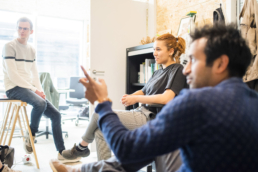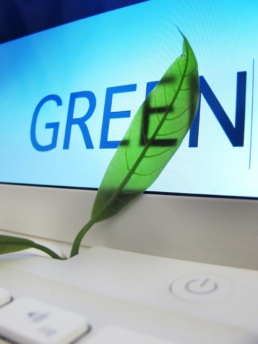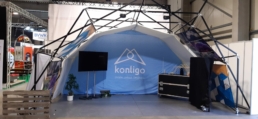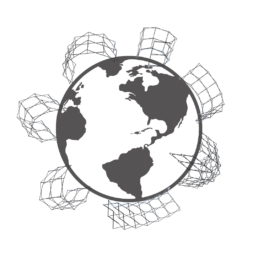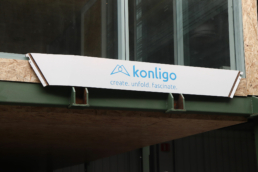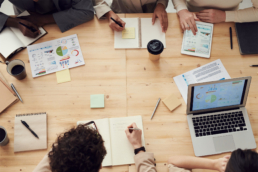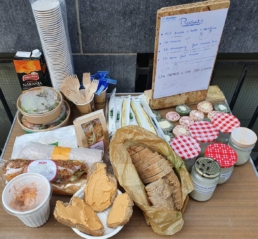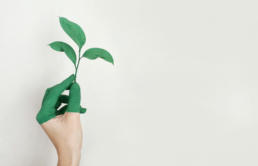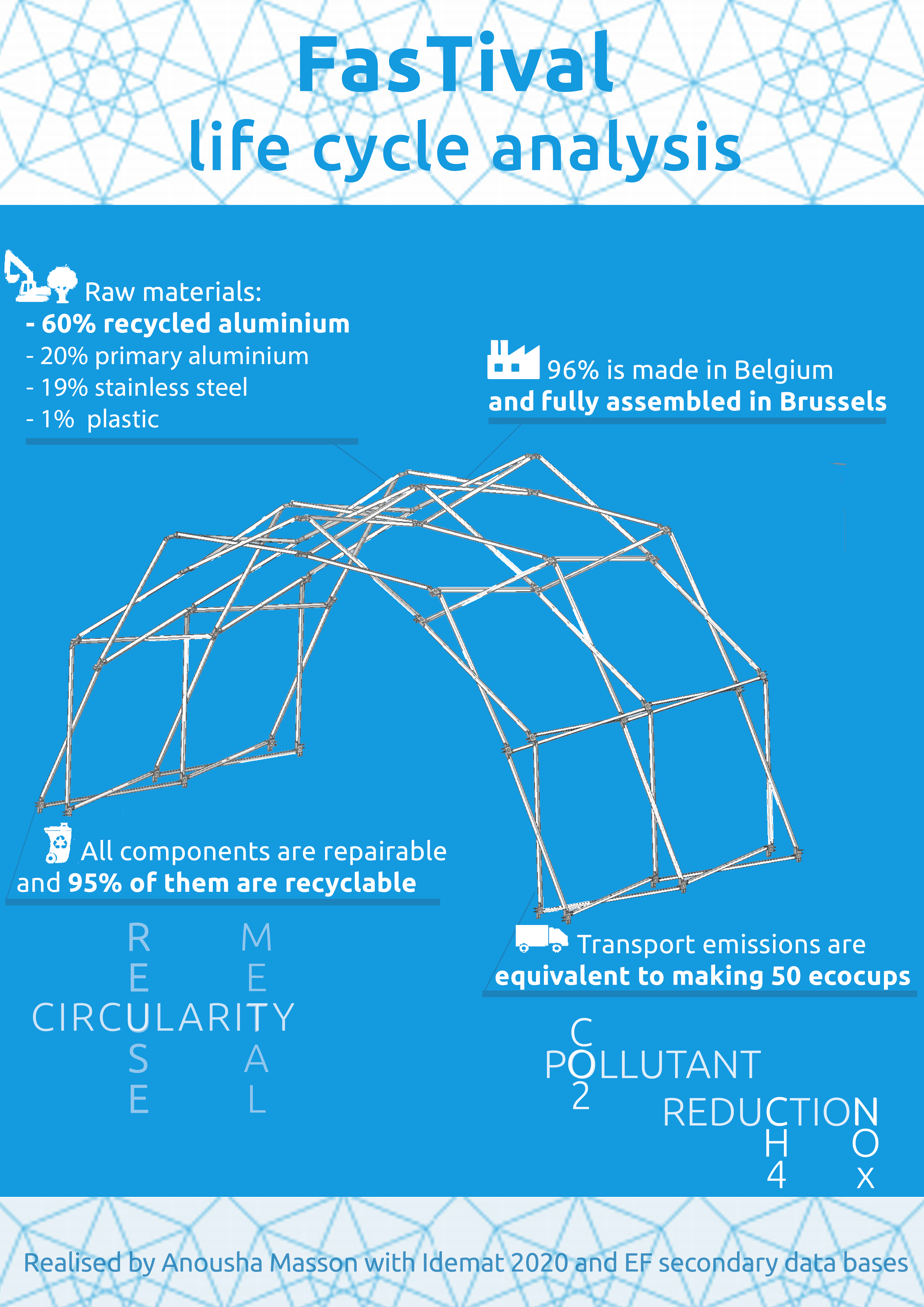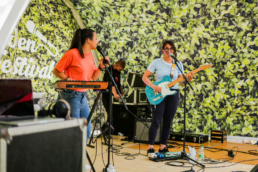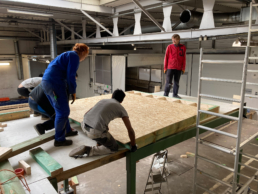The Chronicles of a Konligo Intern - Adhere to humanistic values which are built around empathy
The Chronicles of a Konligo Intern will be a series of articles publish every Friday for 5 weeks. With this series you will be able to see Konligo through the eyes of an intern and how our core values affect the way we work both individually and as a team. Ahmed Soliman was an intern for 2 months at Konligo in architectural engineering and R&D. Each week he will talk about one of our 5 core values at Konligo. Starting with adhering to humanistic values which are built around empathy.
The core values of Konligo can best describe my time in the internship. Along with the vision of the company, those values were always inspiring and guiding the team members during their daily work. My internship experience can be summarized in relation to those values.
Core Value 1 - Adhere to humanistic values which are built around empathy
Konligo strives to magnify the humanistic values of its team, it prioritizes the notion of “let’s be good persons” before being “good employees”. Considering that being “good” is a very relative criterion, the team was always caring, selfless, and empathetic. I think it’s distinctive to work in a team that wants to be better on a personal scale before a professional scale. It may sound magical and definitely could have some downsides from the competitive capitalist perspective of modern society, but it’s working.
Surely, It’s all about money at the end of the day. But for everyone in Konligo, money is just the tool to make an impact in the world. It’s the way to survive and sustain, but it's not the goal, at least that was my impression. Unlike most of the huge modern monster companies, those core values about empathy and change are not just media propaganda, it’s what the company stands for. I think if the world stands a chance, companies like Konligo are the ark that everyone should jump in.
At Konligo I have learned to bring my personal issues to work. It may sound unprofessional, but it definitely isn’t. It’s just more realistic and again more result oriented. Opening up and being vulnerable is usually a faster way to solve problems. While this concept is very new to me in a professional environment context, it widened my vision to have a better understanding and empathy towards my colleagues. People are not machines and personal life does matter.
If you are trying to make an impact on the world, you could first try to make a positive impact on the colleague beside you.
How sustainable is a manufacturing company like Konligo?
Sustainability is one of these new buzzwords next to AI, A/B Testing, Eco-Friendly, etc. But what does it mean to be sustainable? What is the difference between greenwashing? And how realistic is it to be sustainable knowing that manufacturing a new product is already a weight on our environment?
At Konligo, we have reached the tipping point between a start-up and a scale-up. It is an interesting step in the life of a young company because it generates interesting debates about the choices we are making.
Sustainability or economic choices?
On one side, we have our vision (a zero-waste event sector) with our humanistic core value. On the other side, we have the economic reality. Two conflicting objectives in a challenging equation full of tricky parameters.
We can opt for a fully sustainable business, without any CO2 emissions, however, in a manufacturing start-up you are very rapidly confronted with the reality:
- You produce something and therefore you use energy and raw/recycled/reused materials.
- There are raw materials and end products that are not available in Belgium/Europe so they have to be transported by truck/boat (for some companies even plane), generating a high CO2 emission.
- Belgian labor is very expensive. And robotic labor is not per se sustainable due to its production process and energy used.
On the other hand, we could go fully for an economic solution, knowing that if we do so, we are throwing away our sustainability principles, as labor and materials are far cheaper in countries like China (some of our competitors are flying branded tents from China by plane and it is still cheaper than our products produced entirely in Belgium…).
Our solution? Being transparent.
In the world of mathematics and optimizations, an equation with conflicting objectives does not have one optimal solution but a range of optimal solutions, each solution being equally valuable: so which is the right answer in our case?
At Konligo we have decided to go for a mix of sustainable and economic solutions. We can still improve the carbon footprint of our products but we cannot hamper our existence. It is not a fixed solution but a variable solution that is re-investigated very frequently to make sure we stay true to our vision and core values. As well as durable in time with a feasible and self-supporting business model. Because in the end, if the business model is not viable and a company closes its door after 3 years, even if it had very sustainable products, the impact of the company would be next to nothing.
What are our actual situation and our next steps?
We know we are not there yet, but we are doing everything in our current power to deliver a sustainable product:
- The design of our product is future-proof as it can be adapted in time because it is modular and replaceable (every piece of our product can be replaced, making it analog to the fair phone).
- All the pieces can be re-used across almost all of our structures because we didn’t conceive a product, we conceived a kit adaptable to create different shapes.
- We manufacture everything in Belgium, mainly in our workshop at Circularium (Anderlecht). Almost no other supplier of temporary structures does this anymore.
- Our main suppliers are Belgian companies and the recycled aluminum comes from Belgium.
The designs of our tents, stands, DJ booths and pop-up structures are part of the circular approach.
We are aware we still need to improve:
- Our joints are CNC machined, which requires quite a lot of energy and creates waste during the production (which can be recycled but then again asks for energy). (update september 2023: in the meantime we have invested in a mold so that the joints are casted and therefore much more sustainable than CNC casted joints)
- Painting is used to protect the aluminum beams, this provides them a longer lifespan in the event sector, however, it is still painted.
- None of the membrane suppliers can yet propose recyclable options. To counteract, we try to re-use old membranes for covering sleeves, protection tarps, etc…
- The raw material of our membrane suppliers comes from outside Europe, mostly China. However, they are manufactured (and printed) in Belgium, something that not a lot of tent and party tent suppliers still do.
So why is it not greenwashing?
Because we don’t pretend to have the best ecological product on earth. But we do our best to make it the most sustainable possible knowing the circumstances and the economic reality. And this motivation does not come because of the trend around sustainability, but because this is a value embedded in our core values and lies at the origin of Konligo. Furthermore, to make sure we are aware of the new ecological alternatives that could replace some of our components, we are actively participating in different groups around circular and sustainable economy (we are board members of Circlemade and Hospitality for example) so that we can test the innovation in our sector as soon as possible.
How sustainable is a manufacturing company?
It is not a black and white answer. In the end, for us, it is about direct and indirect positive impact.
Directly because we can prove that our clients have reduced their carbon footprint by choosing our structure instead of another one, making the CO2 net balance positive. And indirectly by inspiring other entrepreneurs, our suppliers, and our team to be more sustainable and to have a positive impact. We do this by our actions, our philosophy, our vision, and mostly by mobilizing people around our project. And that multiplicator effect has much more consequences than we can imagine.
And the Winner is ...
This past September Konligo was present at Municipalia, a trade-fair that aims to present (local) government representatives and public officers with solutions to help them improve services in their towns & cities.
That day we offered a challenge to our visitors: to guess how long it took us to set up the structure with the (white) membrane. The correct time was 6 minutes and 21 seconds.
And the winner is ...
Rose Marie Wilmotte from R.E. Wartet Football Club who guessed 6 minutes and 33 seconds.
Congratulations! We will contact you as soon as possible to discuss when you would like to make use of your prize: a €750,- voucher for the rental of a Konligo structure at one of your events.
There is a lot more to discover about Konligo checkout the rest of our website and our social media to find out more!
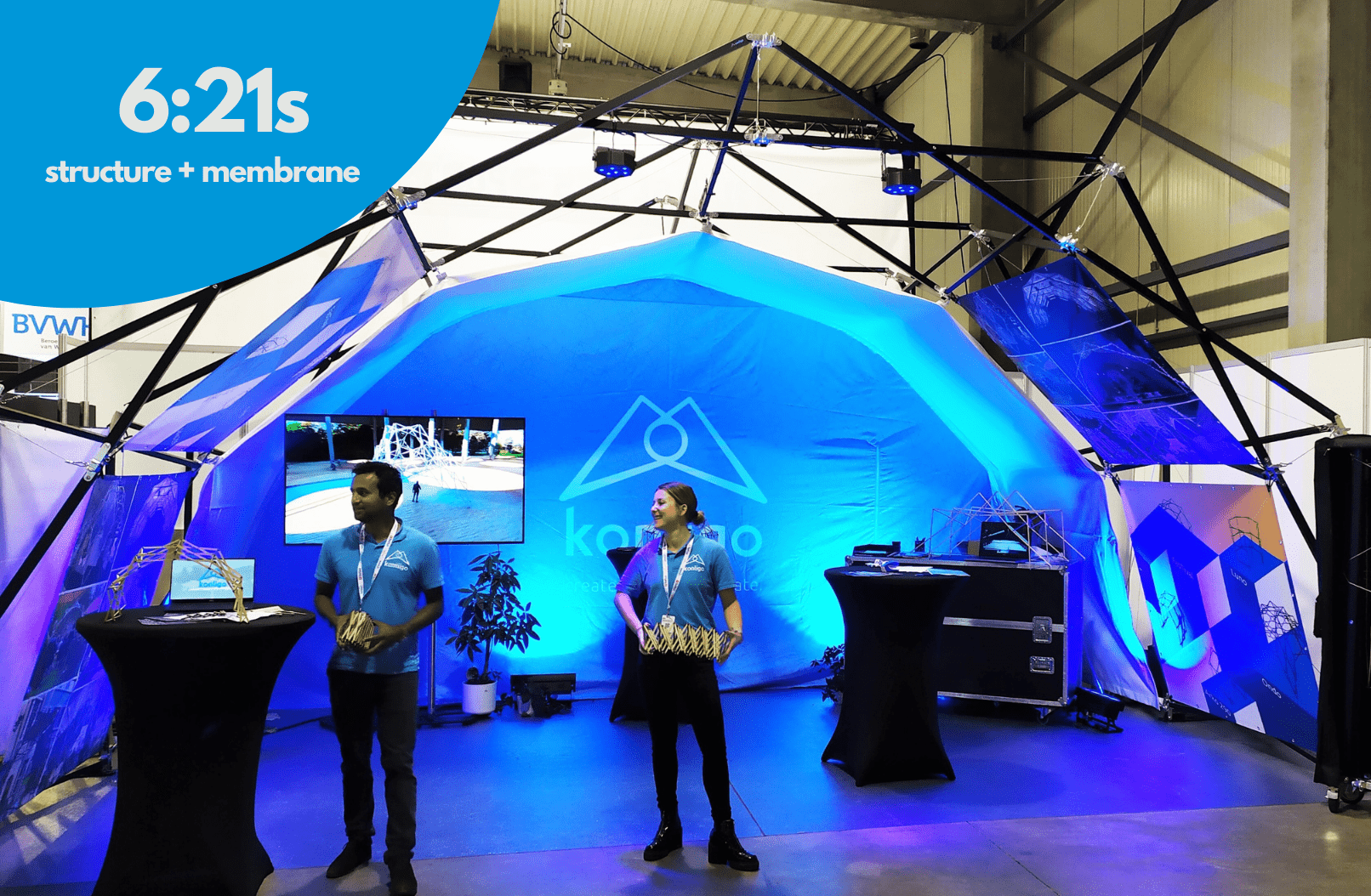
Cultural Intelligence
I started my internship at Konligo 1 month ago in Marketing and Communication. I was challenged to write an article and after some deliberation I realized a great topic would be to focus on cultural diversity. In our team we have Ahmed from Egypt, Cyril from France, Simon from the Netherlands, Arnaud from Belgium, Aushim with background from Bangladesh, Lara half Portuguese and me from Portugal. We find ourselves having conversations about our different experiences and cultures which brings a new perspective to our work. This brings me to my next point.
We are no longer strangers to concepts such as IQ (intelligence quotient) and EQ (emotional intelligence), however a new wave of social research has introduced cultural intelligence. Culture is part of what builds our identity. It is extremely present in our lives, it affects gestures, actions, opinions, who we are and how we act. Being that we live in a multicultural world it's important to understand how to navigate this diversity and how to make it an advantage. This is where cultural intelligence comes into play. Experts define it as the skill to understand different behaviors and being able to work across cultures while adapting to the diversity. It is important because it creates bridges and helps in dealing with unfamiliar scenarios.
Julia Midleton said in a TEDTalk that cultural intelligence will change the world. I found it to be a huge affirmation but the longer I sat with this thought I realized that it could in fact be true. Cultural competence creates an environment where everyone is welcome, builds integration and maximizes the productivity of any interaction.
And how do we work on our cultural intelligence?
We educate ourselves, the first step is to realize there is much more out there, so much to learn and so many different cultures, and just because it is different it does not mean it is wrong.
It might seem simple but we only realize how culturally challenged we are until we have contact with different people from different backgrounds. We should meet people from different communities and social groups so we can actively work to eliminate cultural intolerance.
When it comes to a company's health within a team it's important to take into consideration open communication and acceptance. Konligo tries to dedicate time in cultivating a good work environment, liberal and autonomous. It’s crucial to encourage psychological safety and equal speaking time as well as inclusivity in decision taking. Part of this also means to take into account the cultural differences of our team members, who come from different backgrounds and different parts of the world. By creating a culturally diverse team we want to broaden our own perspectives and create an inclusive team where everybody feels welcome.
Especially for companies in the event sector it is crucial to take into account cultural diversity of its (potential) visitors in this increasingly multicultural world. Cultural Intelligence will be increasingly important to attract a large enough audience and to effectively engage with them.
If everyone is open minded and works on understanding diversity, perhaps we CAN change the world and make it a better one, or we can at least organize better events.
We are Konligo. Not Kolingo, nor Konlingo... right?
Konlingo or Kolingo?
We are almost suffering from an identity crisis: Is our company called Konlingo, or is it Kolingo? We always said Konligo, but could it be that we have been saying and writing it wrong all these years? Where did it all go wrong?
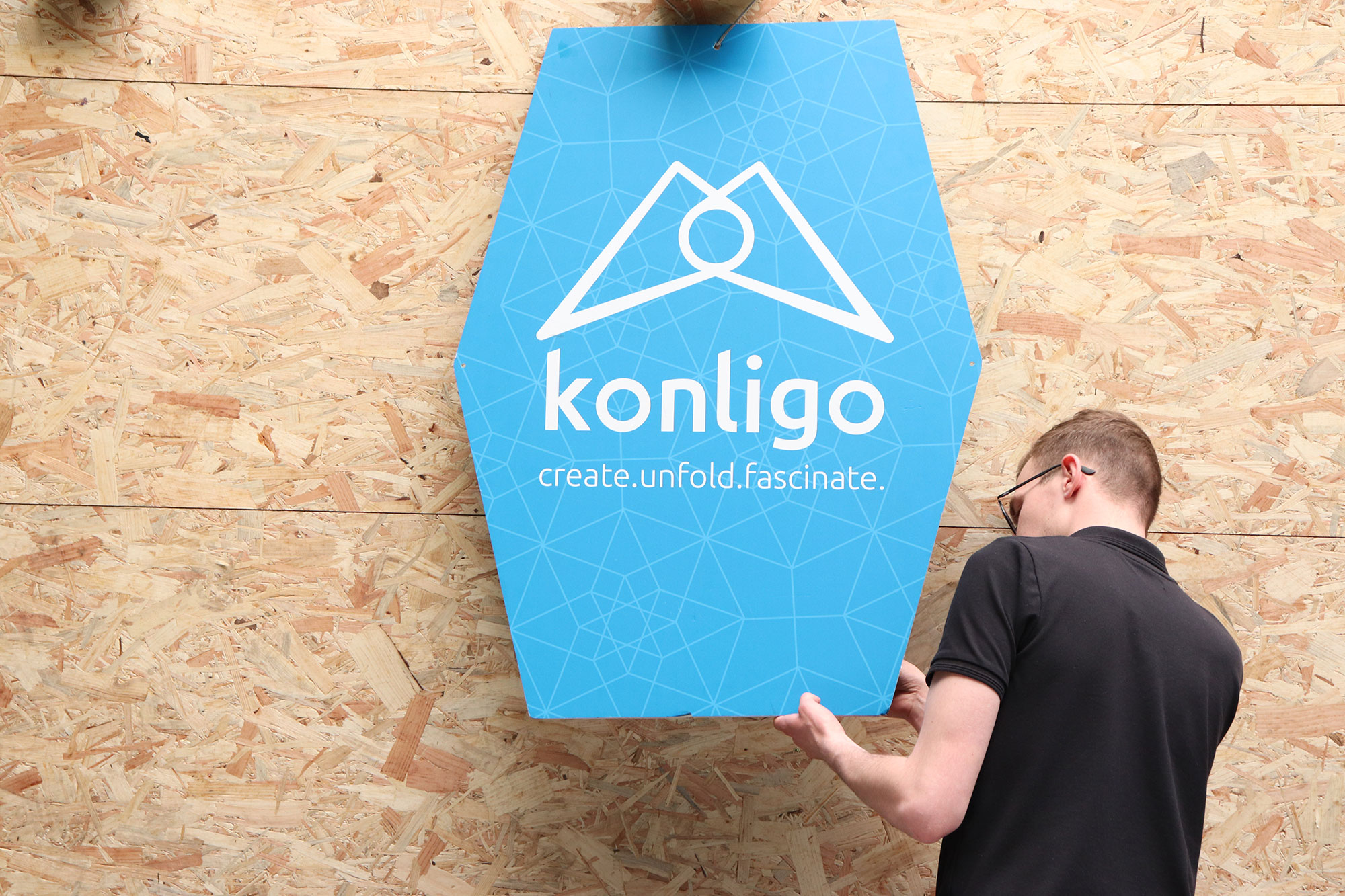
It's Konligo!
To assure ourselves of the truth once and for all, we took a look at the Belgian State Gazette. Turns out that it really is the BV KONLIGO that was founded on April 25, 2018, for the construction of metal structures and the rental and sale of tents. But why do we still regularly receive letters and invoices addressed to Konlingo or Kolingo? We also sometimes discover this mistake in cover letters (not yet a reason for us not to hire you, but it certainly also doesn't increase your chances). And even in the last Trends, it was written wrong! That means it's been written down wrong thousands of times. So, it's not really surprising that we end up having an identity crisis then, is it?
But how come people get it wrong that often? Kolingo and Konlingo are both non-existent words, so autocorrect can't be to blame. Yet, even people who know that it is Konligo still sometimes pronounce it wrong.
The (possible) Explanation
We think it is because people, consciously or unconsciously, are more familiar with the word Lingo. In English, Lingo refers to a foreign or incomprehensible language (https://www.merriam-webster.com/dictionary/lingo). The origin of this in turn is Latin, in which the word lingua means 'language'. For many Dutch people, the word will also be linked to the ever-popular television show Lingo in which people have to guess words and grab balls. And also, the word Bingo resembles it as well. But 'ligo' as (part of) a word, or letter combination does not or hardly exist in French or Dutch. Yet, that really is our name: KON-LI-GO.
The origin of this name lies in the Esperanto word kunligo. Kun means 'with', or 'together'. For example, in kunlaborar, for 'working together'. Ligo in itself means 'linking'. Put together, this forms kunligo, which translates to 'connection' or 'coherence'. We chose this because at Konligo we are always looking for what connects people. But also, because our structures only exist thanks to the (scissor) connection between the different elements.
The spaces that arise under our structures; The events for which they are used as a stage or tent. All of this invites people to come together, engage with each other and connect socially. And that explains exactly our name choice.
Konligo is thus not just a name, but a representation of our identity as a company and as a group of people. We, therefore, hope that from now on our name will not be misspelled, so that we never have to doubt our identity again.
Konligo
How to plan a social project
Do you ever have the feeling that you want to do something good, but you don’t know where to start? This article is about what you need to consider and how best to go about it.
Why should you help others?
Helping people is valuable for two reasons. Firstly, it is beneficial for the people you are helping, and secondly, it makes you feel better as well. Maybe even to that extend, once you start, you don’t stop and find more and more opportunities to help others. Feeling good about yourself should not be your primary goal, but it is certainly a pleasant side-effect, and you are entitled to enjoy this feeling.
Whom do you want to help?
This is obviously the first thing to consider. There are several possible areas in which you can decide to go, like the environment, humanitarian sector, or animal care.
You might want to help in as many different areas as possible, but like a lot of other activities you do, it is important to focus. When you try doing too much, you might not be able to make it possible and end up being disappointed, because your expectations were too high. Therefore, start small, and if you realize that you can achieve more during the process, well that’s great! But don’t put yourself under too much pressure, remember you are already trying to do something good, and you can be proud of it.
How can you help?
Think about the value that you can offer and how you can offer it. You may or may not have anything in mind yet, but you probably have certain expertise or a personal talent that you can use for the cause. Go in the field where you want to help and talk to organizations that already know what is needed. This part is really important.
For example, to help homeless people, you must find the right approach. You want them to feel valued and understood. Therefore, you must understand their way of thinking as well as their needs. Otherwise, they might get the feeling that you view them as less valuable than yourself even though you really did mean well. So, go online, do your research, find some organizations. There are already a lot of them who are fighting for a good cause and would appreciate your help. Also, by this, you can find out the best way to help. It is also a process of listening and collaboration.
With whom can you collaborate?
This step goes hand in hand with the one before: If you have found organizations that can help you on your journey, why not team up with them directly? Think about what they told you, see if it corresponds to your idea or your values, and see if you can support them.
But there is more to it. Depending on your budget and your goal, you might want to find sponsors. And there is not really one rule about it. Ask whoever seems fit for this cause. You may have to send out a lot of emails, make phone calls, or go to them directly. For big companies, it is usually easier to send an email to their main office, or some might even already have application forms to fill out online. With small stores, you might achieve more by making a phone call or approaching them on site. Also, there are different kinds of donations you can ask for, like discounts, products, financial aid, or services. Make sure you know exactly what you need before asking. To increase your chance of success, explain nicely who you are, what your project is, and your motivation behind it. Although you are doing it for a good cause, you are still asking them for help. And lastly: Don’t give up! It might take a while, but you will find people to support you.
The key to success: a good timeline
When you have the concept, you must set up a schedule with the big steps. Give yourself enough time to search for sponsors minimum of one month and make sure that you choose the right time of helping. For some causes, there might not be a wrong time, but again ask the experts in your field on this one.
Don’t get discouraged!
This might seem like a lot to consider, but it just needs to be well planned, so you don’t end up stressed, and disappointed. It might be some work, but it is worth it! For the others and you. So, don’t hesitate, even the smallest project can make a big difference. It might be a cheesy line, but when you rewind to a moment, where a small gesture from a person has made you smile, then you know that it is true indeed.
Project Solidarity and Circularity
On Wednesday, June 9th, our two interns, Sonja and Anousha, went to meet homeless people, offering them 20 meal baskets with hygiene products. You might have seen our posts on our social networks (if not, check them out below) and in this article, Sonja and Anousha want to explain the philosophy behind their social project.
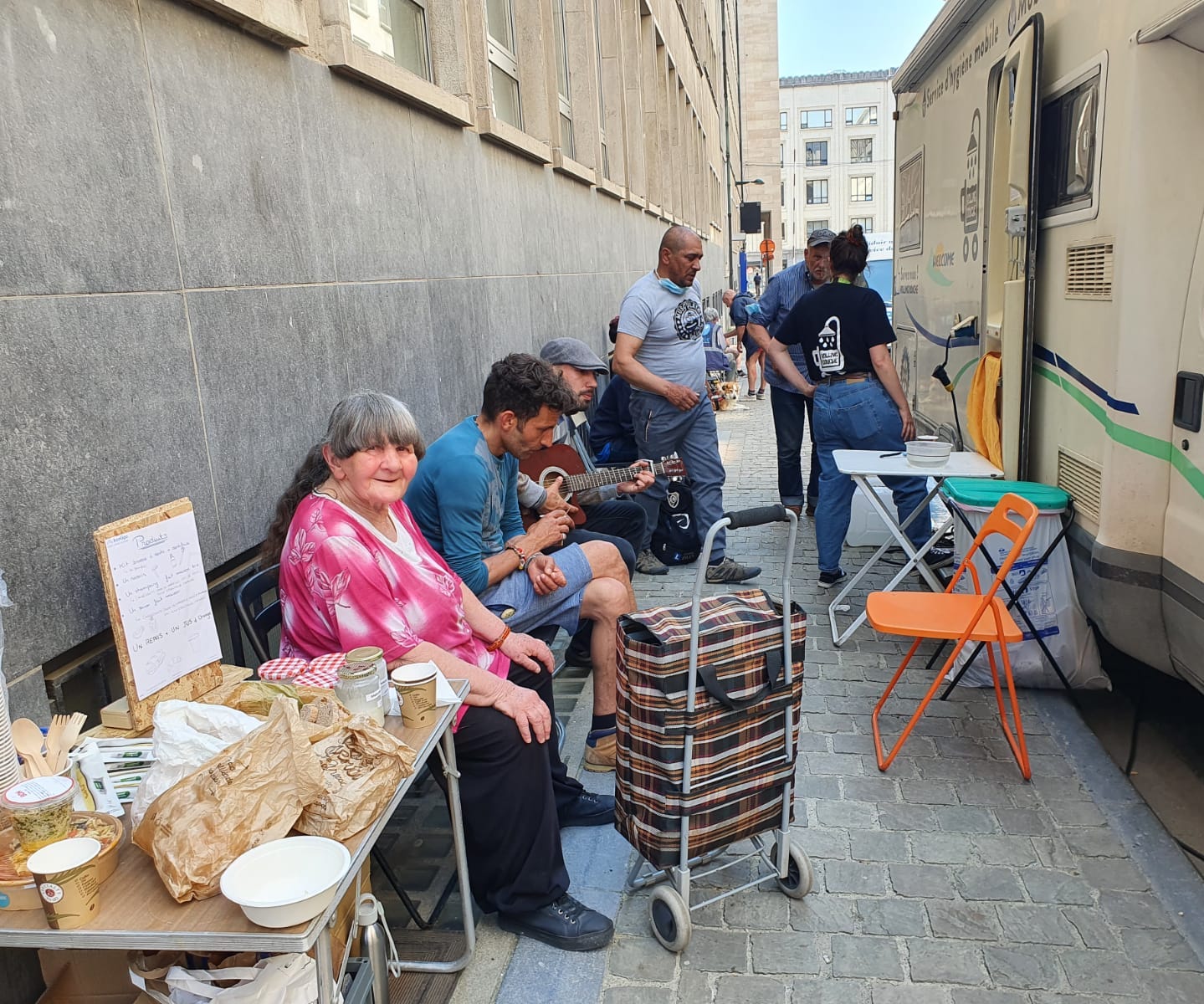
Circularity
Just like the members of Konligo, we believe that circularity is one of the keys to building tomorrow's world. We find this so important that it was a criterion of choice in our search for an internship. Secondly, what is particularly important is circularity in our daily lives. This starts with our consumption of the so-called "necessities". Since the sanitary crisis, you are probably familiar with them, they include general food products, hygiene products, cleaning products, etc. Indeed, by avoiding food waste, by using a product that is the least processed, with a minimum of ingredients, a minimum of packaging and that comes close to home; you are already participating in a virtuous model for the planet.
Therefore, for our social project, it seemed logical to us to include this value. This has resulted in the use of food from the anti-waste food chain and the creation of hygiene products with little packaging and few ingredients, which themselves come from an organic and sustainable neighbourhood grocery shop, Natural Corner.
Solidarity with the homeless people
At the beginning of May, Konligo offered each of us the opportunity to create our own solidarity project. It seemed obvious to both of us to combine our ideas and strengths. Before defining the ins and outs, we needed a theme that would combine our values and desires! Unfortunately, it was obvious... Since we arrived in Brussels, we have been using public transport every day and we have come across many homeless people. Therefore, we decided to prepare a meal basket for them, along with hygiene products, and go and meet them.
Not knowing the world of homelessness, it seemed essential to us to get closer to experienced people. This is where the Rolling Douche association comes in, as they are our neighbours at Circularium. Rolling Douche offers a mobile hygiene service, in the original form of a motor home specially equipped with decent sanitary facilities. This association of workers and volunteers is present every week at three fixed locations in Brussels. When we met them, they told us about the products that are necessary and missing in their mission: razors, deodorants, feminine hygiene products. This information helped us to prepare our baskets.
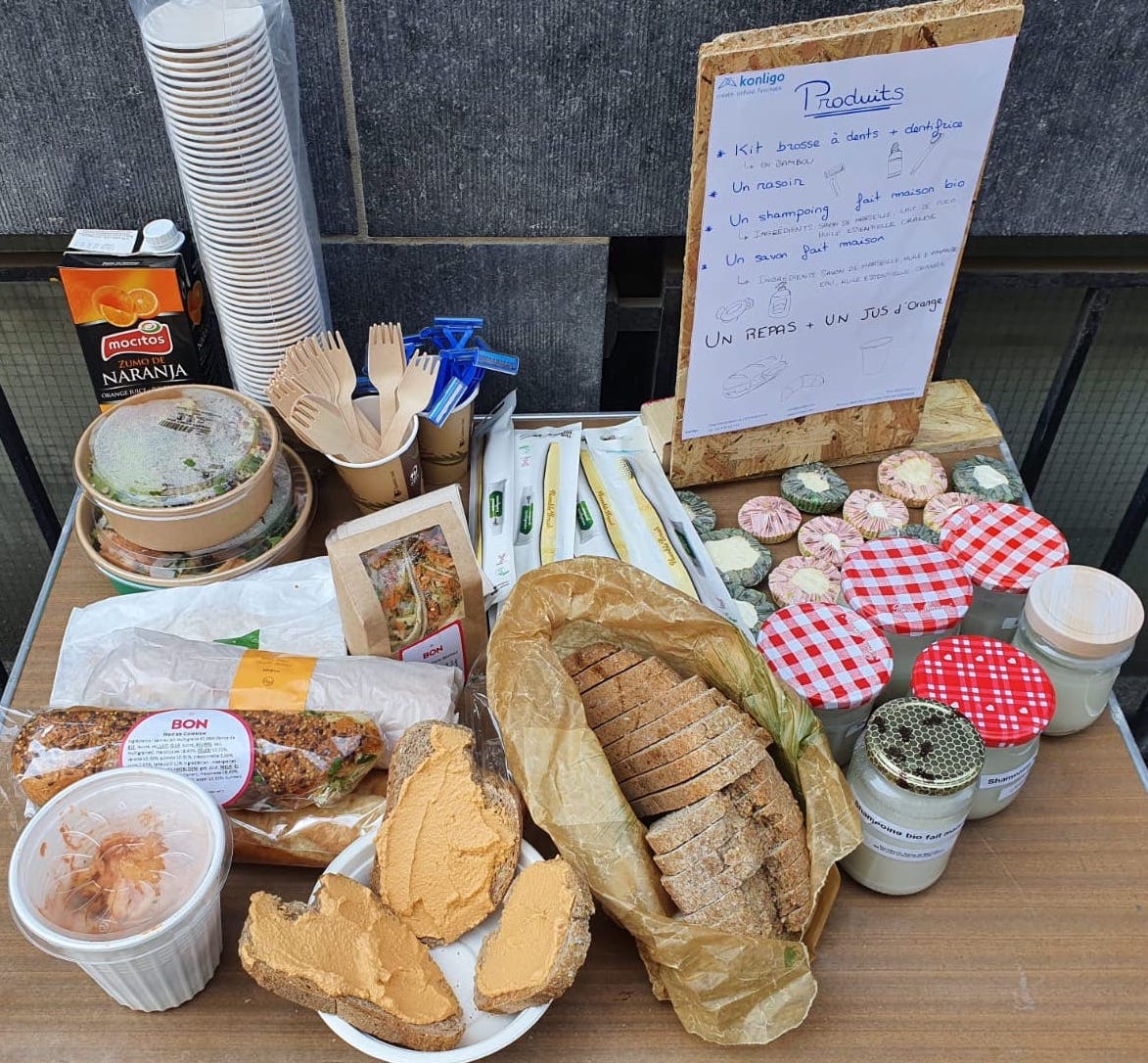
The initiative
To make these baskets, we called for donations by contacting different entities: local shops, department stores such as Carrefour, companies that are active in the fight against food waste, and foundations such as Humble Smile – a group of dental and development professionals who promote oral health and healthy smiles for everyone. The call for donations took place in two phases. Firstly, we contacted them by email or via a form provided by the entity. In a second phase, we went to meet the shopkeepers.
In addition to the donations, we also wanted to make some hygiene products: soap and shampoo. To do this, we used the budget allocated by Konligo and organised a workshop at Circularium on Wednesday, June 2nd. We tried to maximise circularity, using empty jars as containers for the shampoo and paper muffin moulds as moulds/packaging for the soap. Moreover, the products consist only of three to four ingredients each. These ingredients came from the local organic and sustainable grocery shop, Natural Corner.
On the day, we were able to provide about 20 meals (sandwiches, mixed salads, cold dishes, pastries, orange juice...) along with 25 homemade shampoos, 30 homemade soaps, 20 razors and 33 toothbrushes/toothpaste kits. This one-off event was a moment of sharing on all levels. We had time to share, laugh and understand who these people are. This one afternoon experience shows that we can make people happy with small gestures and try to fight social inequalities at our level through sharing.
The next day, we also collected a final donation from Carrefour (three large boxes of sanitary towels and tampons, about twenty deodorants, ten conditioners, moisturizers, soaps...) which we gave to Rolling Douche.
A big thank you
- To Aline and Audrey from Carrefour Belgium, for helping us obtain the donation of sanitary towels and tampons, deodorants, conditioners, moisturizers, soaps...
- To the Swedish company, The Humble Co., for their donation of amenity kits consisting of bamboo toothbrushes and natural toothpaste.
- To a company fighting against food waste for their vouchers. Vouchers that enabled us to buy quality food from local traders.
- To Natural Corner for their commercial gesture on the products needed to make homemade organic shampoos and soaps.
- To the people who donated empty jars or participated in the workshop.
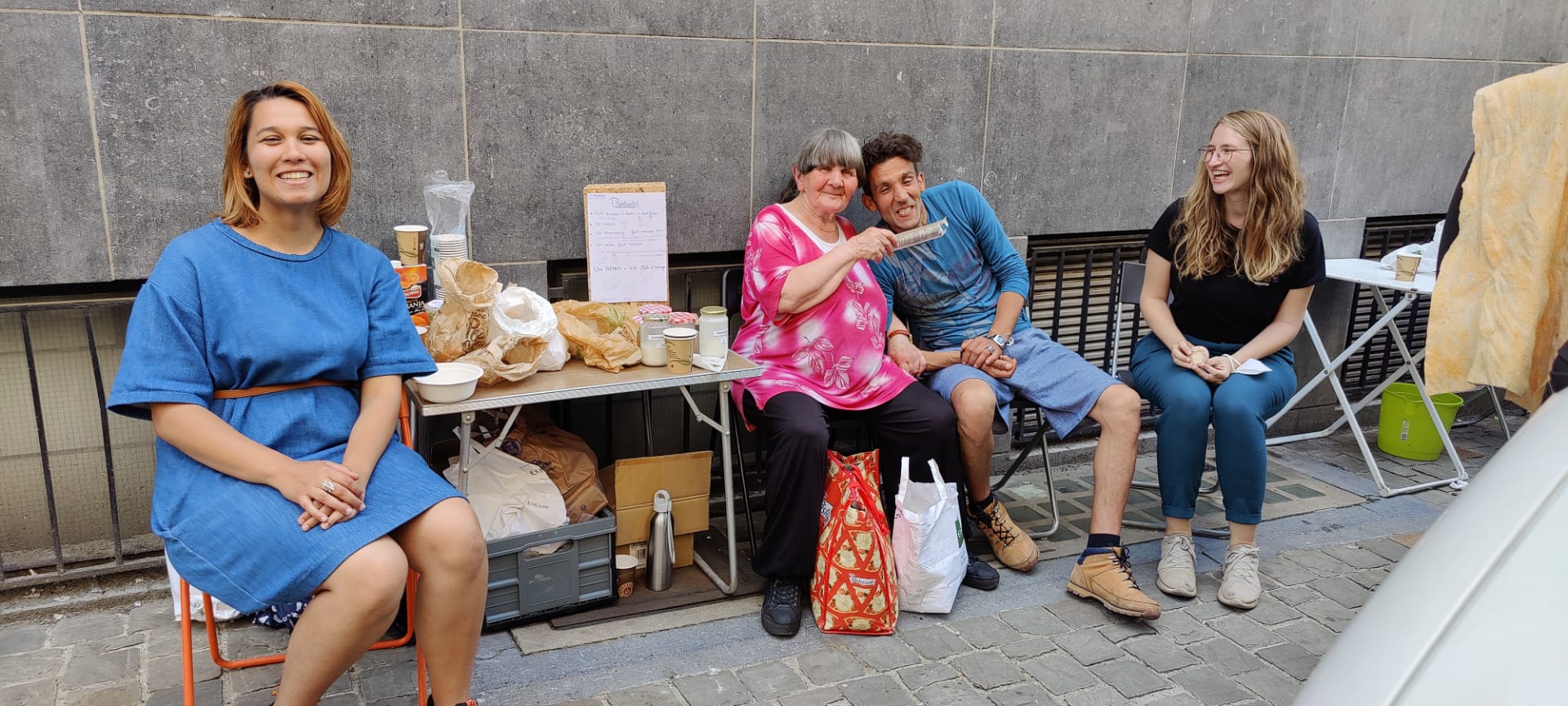
Did you know?
If you want to make your own shampoo, nothing could be simpler as only three ingredients are needed: 100mL of liquid Marseille soap, 100 mL of coconut milk and 20 drops of essential oils of your choice. Put all the ingredients in a container with a lid, close it well and shake to mix the ingredients. Before each use, remember to shake.
Storage: about 1 month.
How Sustainable is a FasTival? A Life Cycle Analysis
Are you wondering if our structure design is sustainable? Well, we asked our R&D engineer intern Anousha Masson to share her research and life cycle analysis on our most popular product, the FasTival.
Anousha, could you tell us how a product is sustainable?
To have a sustainable product, several parameters must be considered: the number of components, the type of materials/processes, the transport, the number of uses, the end of life of the product, etc.
In a FasTival, there are 6 main families of components: aluminium profiles, aluminium joints, steel feet plate, Dyneema¹ cables and various fastening and assembly elements made of steel, aluminium, or plastic. The total weight of the components is 132 kg. Having light components and minimising the different types of components already helps to reduce the environmental impact of the product's life cycle. These first elements are already good practices to obtain a sustainable product, but an in-depth study with the aforementioned parameters must be conducted. This is where numerical methods such as LCA come in.
What is a life cycle assessment (LCA)?
LCA is a tool used to identify, quantify, and evaluate the environmental impacts of a product, service, or activity. Indeed, all phases of the product's cycle are assessed: from the time materials are extracted until the product end of life through the steps of manufacturing, transportation, storage, use, recovery, reuse, and disposal.
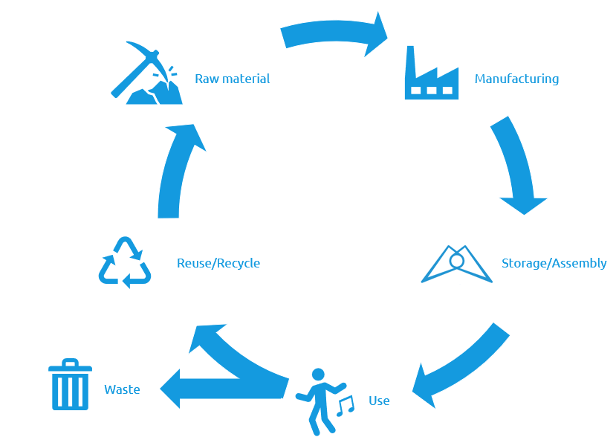
What is the first step in your study?
Before listing, quantifying, and filling in a database in Excel, it is necessary to define the purpose and scope of the study. Here, the study object is the FasTival pop up structure used for 1,000 days. The included steps are raw material extraction, manufacturing, assembly at Konligo, use, and end of life of the product with transport and packaging used between each step.
How did you find the information for each step?
To trace the life cycle of each component composing our event structure, I contacted our suppliers. For example, a scissor element is made of two beams, three plastic washers, two sleeve nuts and a stud bolt (fastener components). I have weighed and measured each component and I requested as much information as possible from the suppliers (material used, origin, forming process, type of packaging, type of transport…). The more precise the information, the more reliable and complete the analysis will be. This step was time-consuming, but it was crucial for obtaining successful results. Then, I completed an Excel database that converts the input data (weights, materials, processes, distances...) into output data (= environmental impacts).
Did you create this database or is there a universal method?
The databases used are Idemat 2020 developed at the University of Delft in the Netherlands, and EF secondary which comes from the European PEF project aimed at harmonizing LCA methods. In our study, we used the Idemat 2020 for raw materials and manufacturing steps. The EF secondary was used for transport, use and end of life phases. By using a universal method, I can compare the environmental impacts of a FasTival to other products.
What are the environmental impacts obtained?
The LCA gives us 5 results on environmental impact:
- an end-of-life score expressed millipoint (mPt), a unit common to all impact criteria (sum of damage to human health, ecosystems, and resources)
- a climate change score in kg CO2 equivalent, which combines the increase in the greenhouse effect, climate change, and the increase in the Earth's average temperature
- a respiratory disease risk factor (= human health effects of potentially inhaled inorganic particle emissions)
- a result on water eutrophication in kg CO2 equivalent, considering the proliferation of aquatic vegetation, oxygen imbalance and the release of toxic substances by aerobic bacteria
- a result on the energy consumed in MJ (= total non-renewable primary energy consumed)
So, is the FasTival a sustainable product?
Yes, if it is used as many times as possible and recycled at the end of its life, it is indeed a sustainable product. So, it is also in the hands of our customers to make the most of the sustainable potential by taking good care of it. Secondly, since the most used material comes from recycling, the environmental impact is lower than for a FasTival produced with primary raw materials. And finally, durability is ensured through Belgian manufacturing and assembly (see image).
Did you know?
Using a FasTival for 1000 days has the same impact as producing and using 1050 disposable plastic cups.
¹ Lightweight material with tensile property comparable to steel cables
If you can't go to a Festival, make it come to You!
You want to have a Festival in your Garden? My Garden Festival makes it possible!
This project allows you to organize a quality evening without leaving your home! Therefore, renowned artists, sound and light technology, artistic stage, food truck... all the elements are put into place for you, so that you can enjoy an unforgettable moment.

An original concept of which we are very happy to be a part! Indeed, for the second consecutive year, the artistic stage is a FasTival (www.konligo.com). Jean-Francois Guillin, in charge of the event, tells you more about his motivation to choose this type of innovative structure: "I decided to opt for a Konligo structure for quite simple reasons: this structure is very easy to transport, very easy to install with 2 people and, moreover, aesthetically, corresponds perfectly to the level of quality that we want to give to our event.”
New this summer 2021 is the possibility to also "book" comedians! Freddy Tougaux, Fabian Le Castel, and Martin Charlier (also known as “Kiki L'Innocent”) will be there. Concerning musicians, the catalog is extensive, including more than 80 artists. You can find many talents of the Belgian scene such as Youssef Swatt's, Léo Fifty Five, Glauque, Glass Museum, Tanaë, and more.
For more information visit: https://www.mygardenfestival.be/
Making your workspace more sustainable or: How to build a circular office
Recently we have moved our office and workshop to a new location! Konligo can now be found in Circularium, a circular economy centre in Anderlecht, where we will build our tents, pop-up structures and stands from now on. Circularium is 20.000m² of ex-industrial property repurposed for local, social and circular economy organizations in Brussels. At Konligo we are firm proponents for a more sustainable economy, which is why we are very excited to be here. And to make our time here even more agreeable we designed and built our own office ourselves following a circular approach. In this article we will explain how we have applied these sustainable design principles to a mezzanine office and workshop in an industrial hall and what to keep in mind if you want to build with reused materials yourself.
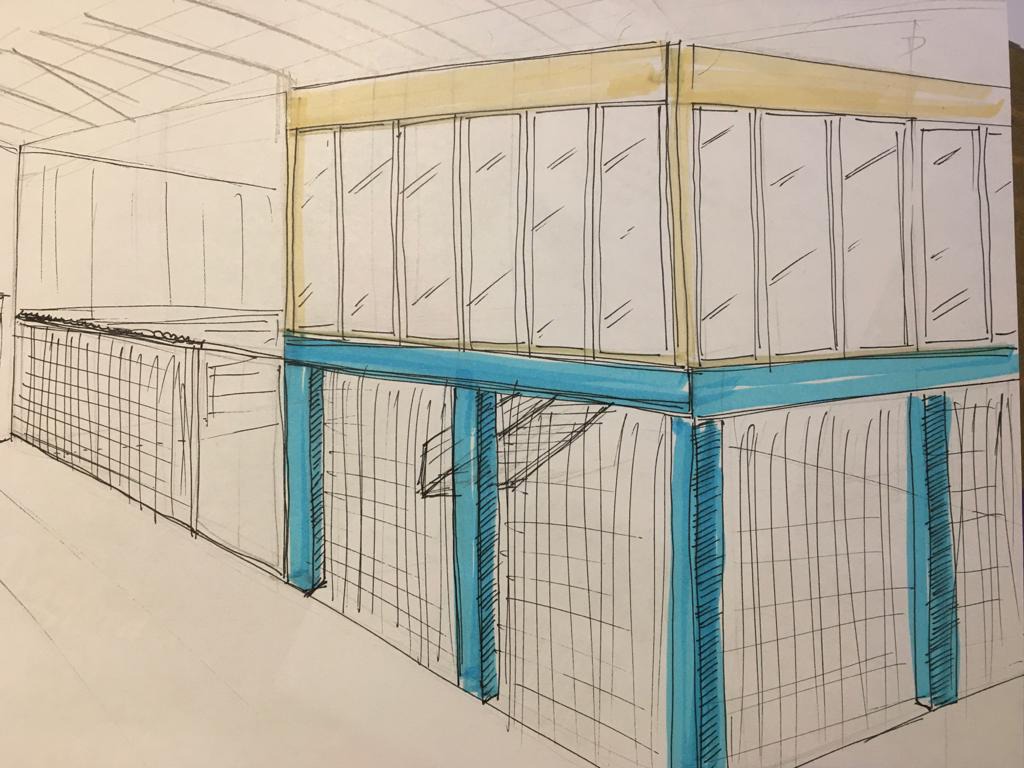
Traditional building design thinking starts with a goal in mind and then makes a design, looking for a supplier for the right materials afterwards. But in order to reduce the ecological footprint we based our design on recuperated building materials, starting with what we had or were able to source sustainably. This does mean that the initial design phase can take longer than usual: you need to think smartly about how to install and connect all the different materials, which often have very different dimensions. In addition, you also have to take into account the dynamic aspect of the life span of an office: one day the building will have to extend or is to be taken apart again, so dismantling or reconfiguration, without demolishing, needs to remain possible. On top of that it's better to be prepared to put time and effort in iteratively adapting your design. You might start with a great design, but then come across a good deal for some beautiful, recuperated materials which you want to include, or realize that the materials you initially meant to use are no longer available or not of sufficient quality. That will shuffle around your design constantly. In overall, the better prepared you are, the less problems you will encounter when building commences, so the time investment in your design will definitely be worth it.
In the picture below, we've shown how we combined the reused materials that we mainly bought from BatiTerre and RotorDC. Other items that are not shown like the fence, the carpet tiles and our furniture were found through bankruptcy auctions, or second hand shops.
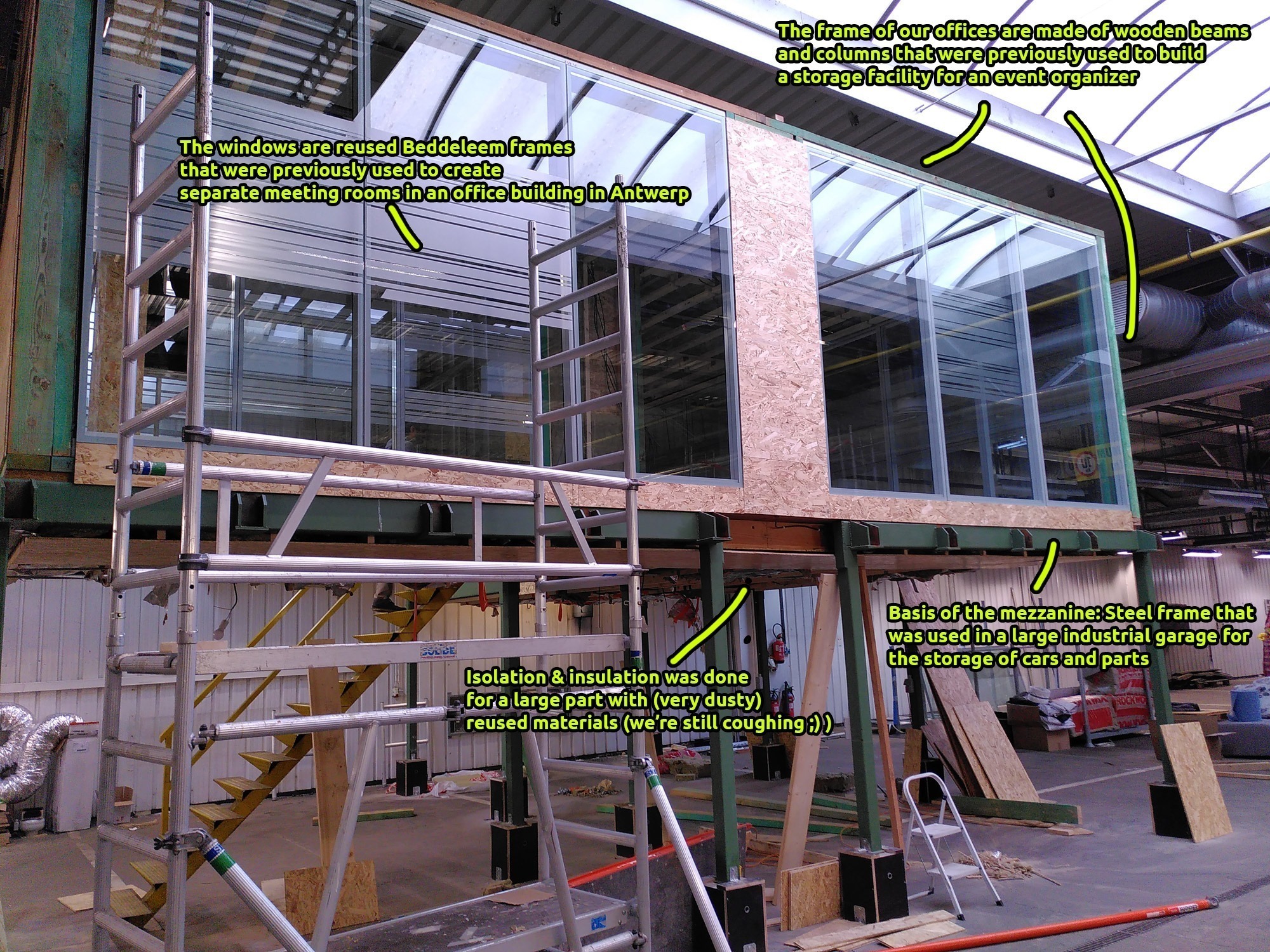
To keep the design as adaptable as possible, we use only reversible connections (so no welding or gluing, but bolting and screwing) and our carpet tiles are simply lying on the floor and remain in place because they are squeezed in by the walls. Unfortunately, we were not able to find quality reused materials for everything. Our electricity cables and part of the OSB (wooden panels) and wooden beams for the roof are new.
Important to keep in mind when starting your own project is that repurposed and reused materials are not 100% ‘perfect’, as if they have just left the factory. Some wooden beams were bend, some attachments for the windows were damaged, dimensions have larger deviations etc. This does not have to be a problem if you inspect your materials well in advance, and design with the deficiencies in mind. A way to do this is to include more tolerance in your design (don't go for the millimetre), to measure and remeasure with every building step (to measure is to know) and to be ready to apply some creative problem solving when you find an unexpected problem (but that’s with every project, circular or not =D).
In summary, building a more sustainable office requires a completely different design method than traditional buildings, but the result is worth it! Curious about how we apply circular economy to our pop-up structures, visit our website.
